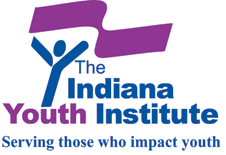
The scene from Marjory Stoneman Douglas High School in Parkland, Florida is one we have seen far too often: terrified students fleeing a school, parents frantically searching for their children, law enforcement swarming a campus. While our immediate concern is for those directly involved in these tragedies, instinctively we also wonder if our own children are safe. Safety is the top school-related concern of parents, above academic performance, student services, facilities or educator quality. Parents must have an accurate understanding of the safety plans in place in our schools. We also must work to ensure that students, and their families, feel that their schools are safe.
School administrators are keenly aware of the need to protect students, with the range of threats including not only active shooters but also weather and natural disasters, noncustodial parent abductions, and everyday issues like bullying and fighting. Although mass school shootings understandably garner intense media coverage, all threats to school safety are cause for concern. Research shows that any instance of crime or violence at school not only affects the students directly involved but can also negatively impact bystanders, the larger school environment and the community.
The good news is that Indiana is leading the nation in school security and safety planning. Indiana is one of only two states with a school safety specialist law, and is the only state in which the program is fully implemented. Every public school corporation in Indiana is required to have a certified school safety specialist, and 88% of districts have two or more specialists.
David Woodward has worked at the Indiana Department of Education (IDOE) for over 20 years and is architect of the state’s School Safety Academy. Started in 1999, the Academy’s five-day basic training covers national and state best practices on topics such as cyberbullying, digital threats, active shooters, safe and effective drills, student suicide and school entrance security. Each district specialist must also complete two additional days of training annually and are tasked with starting the multi-step process of updating and implementing their district’s safety plan. As Woodward notes, “The threats to our schools are always changing, so our response always needs to be updated.”
Although our state is proactive in addressing the safety needs of schools, challenges remain. Fear at school can contribute to an unhealthy school climate and lead to negative student behavior. Students who feel unsafe at school are more likely to miss days of class, and students who witness school violence are more likely to experience health problems, social and emotional difficulties, and poor academic performance. According to the National Survey of Children’s Health, 78.1 percent of Indiana parents say they “definitely agree” that their child is safe at school. This is compared to the Healthy People 2020 initiative’s goal that 95 percent of parents will consider their children to be safe at school. We all have a role to play in creating and sustaining a climate of safety through our schools.
At the leadership and policy level, more can be done to increase both the actual and perceived levels of safety. In late February, State Superintendent of Public Instruction Dr. Jennifer McCormick called on the General Assembly and our Congressional Delegation to pass additional school safety policies. Her two main requests were increased resources for mental and behavioral wellbeing, and ensuring that our private and charter schools all have the same requirements to keep our schools and students safe. Late in the legislative session, Governor Holcomb requested a $5 million increase in the state’s school safety grant fund, but the bill died in the final minutes of this year’s session. The May special session will be a time to finalize additional school safety actions and funding.
At the community level, effective communication is critical. Although schools understandably cannot publish their specific safety plans, they can and should talk with parents and community members about the steps they are taking to ensure students are safe. Experts suggest directly calling your school principal with safety concerns, noting that many people erroneously first call local law enforcement. Student voice is also important in shaping and maintaining a safe school environment. Ask your school how they are supporting student engagement in their safety planning. Finally, do not underestimate the impact these national traumas have on our students’ sense of safety.
The horrific mass shooting in Florida has once again heightened our concerns for school safety. Indiana has proactively taken steps to ensure our schools have updated safety plans in place and yet even the best plans are not guarantees. All Hoosier parents and families should have a clear understanding of what is going on at the state and local levels, especially inside their individual schools. Students are understandably and admirably stepping up to not only regain their sense of safety but also to call for increased action. But as community leaders, parents and citizens, it is our shared responsibility to provide safe learning environments for all of our educators, administrators and, most importantly, our students.
(Tami Silverman is the president and CEO of the Indiana Youth Institute. She may be reached at iyi@iyi.org or on Twitter at @Tami_IYI)
